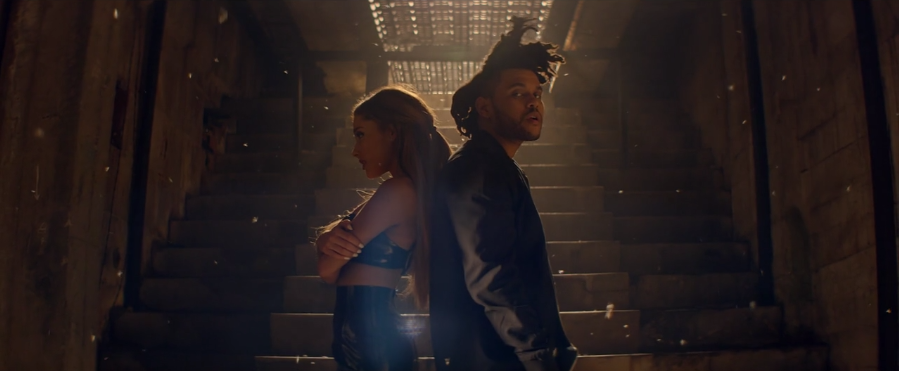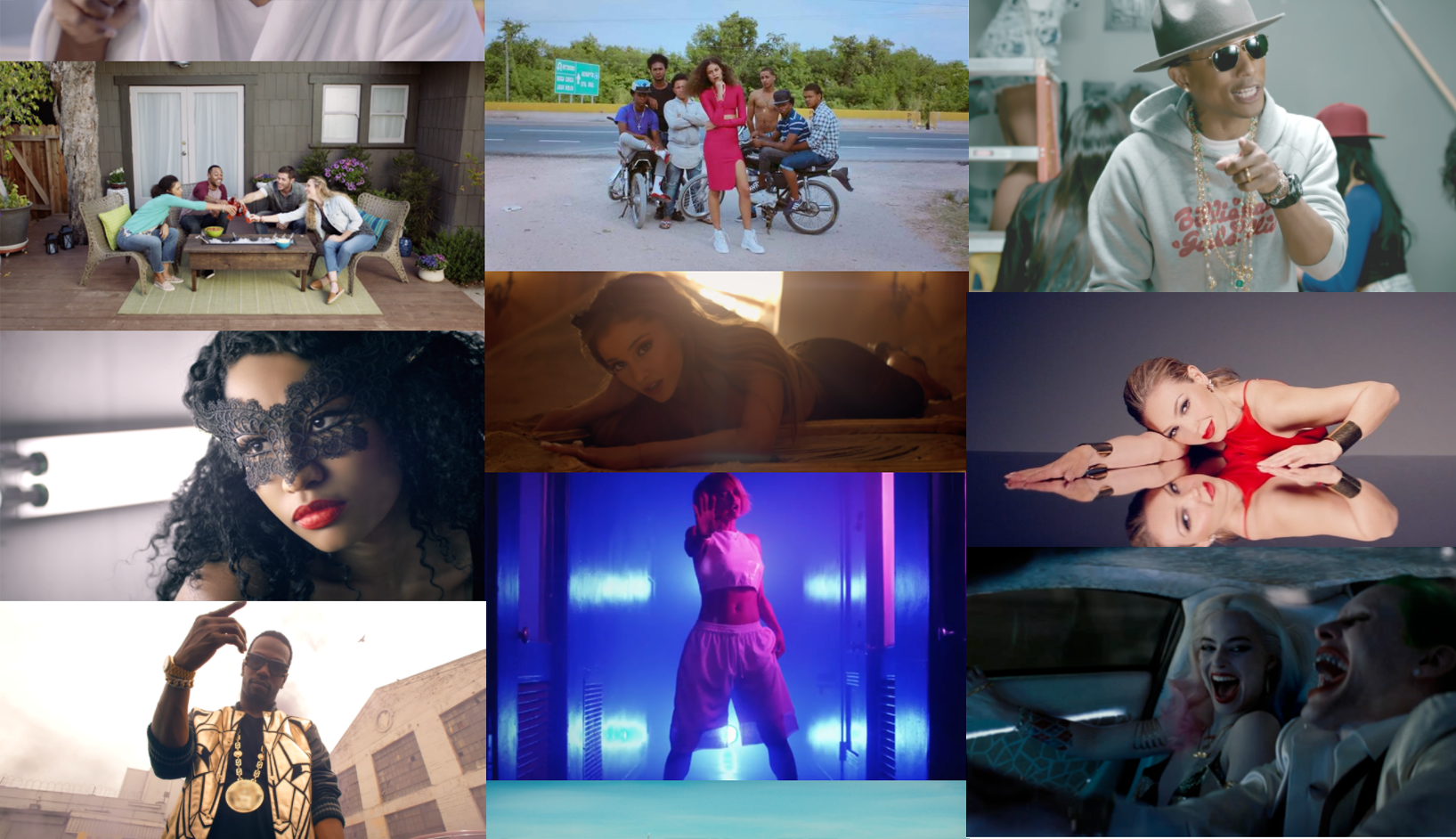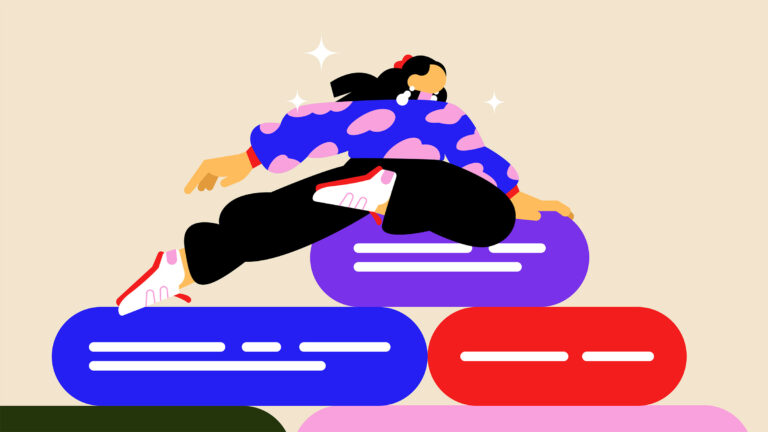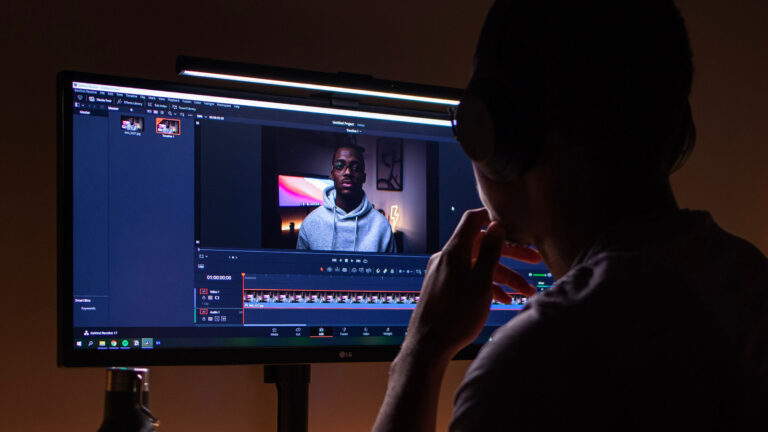For those of you hoping to make a leap up in the industry, Taylor Tracy’s editing career shows that there is hope! Tired of the uninspiring corporate video work she was doing in Nebraska, Taylor took a chance that landed her a job cutting A-list music videos in L.A. Taylor’s wild ride shows that self-confidence, hard work, and a little luck can shoot you to the top of this industry in a hurry.
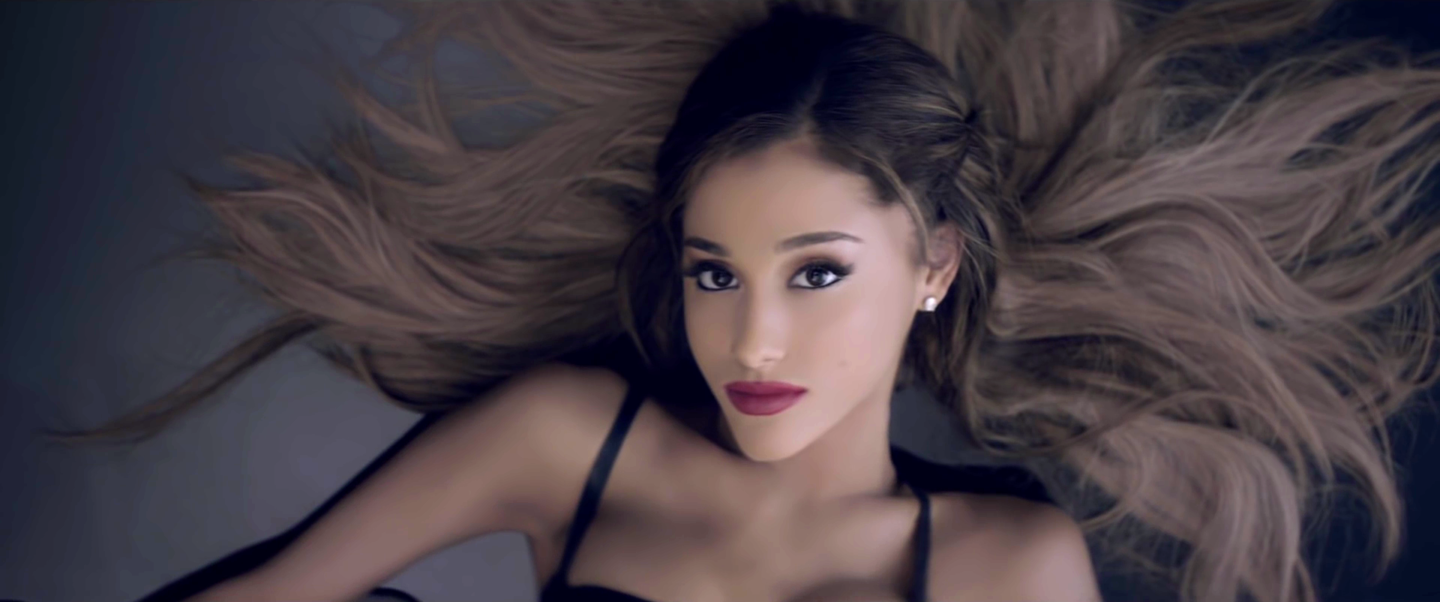
Today, Taylor works in many phases of post-production. “I get to have a taste of the business; face-to-face with clients, managing the budget,” Taylor says. “It’s a fun balance of creativity, and also having to be very organized and detail-oriented.” Despite the many hats she wears, Taylor doesn’t hesitate when asked where her passion lies.
“I’m an editor. That’s where my heart is.”
Editing corporate video wasn’t exactly Taylor’s calling in life. “It was not fulfilling the creative thirst that I had,” she says. She took a shot in the dark, in the form of an email to music video director Hannah Lux Davis, offering her services as an intern. Davis took Taylor up on her offer, and Taylor traded in the plains of Nebraska for the hills of Hollywood.
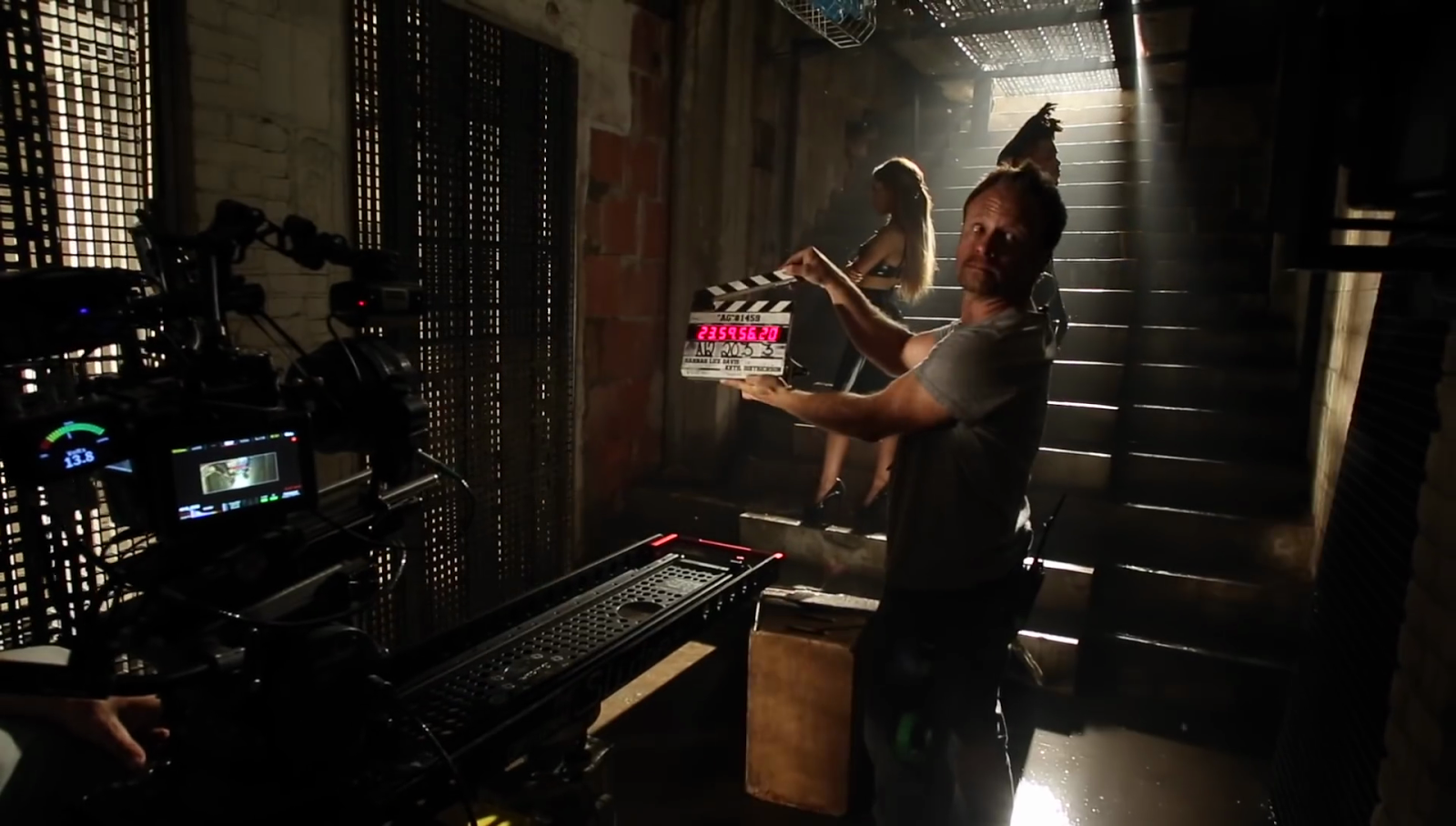
Taylor relocated to Los Angeles four years ago, signing on as an assistant editor with the production company that represents Davis, London Alley. Taylor rose through the ranks at London Alley, before heading out on her own as a freelancer. Along the way, she edited videos for some of the most popular musicians in the world, including Ariana Grande, Ed Sheeran, Demi Lovato, Nicki Minaj and more.
Her own path may be unique, but Taylor has plenty of advice for editors – and filmmakers in general – of all experience levels, and a lot of it comes down to nerve. “When it comes down to it,” she says, “you need to be brave in situations where you may be hesitant or scared. That’s how you move forward.”
Nebraska to L.A. In One Email
Now one of the hottest pop music video directors in the world, Hannah Lux Davis was just getting started when Taylor emailed her to make her pitch. “I admired her work, and that of the production company she was with,” Taylor says. “I sent her a reel. It was just little passion projects that I did with my friends, showing the style that I liked. Cool little moments cut to music. Nothing monumental, but it’s what I had been working on, and what I would spend my free time doing. That’s just what I sent her, since I didn’t really have anything more creative or professional to show.”
This is an important point to focus on, for those of you who are hoping to move into a different part of the industry. Taylor did have professional work under her belt, but it didn’t showcase her skills and her sense of style like the fun, casual fashion videos she liked to shoot with her sister. The films that she made on the side, her passion projects, were what she eventually used to make her career move.
Taylor landed a full-time job at London Alley through Davis as soon as her internship was over. Needless to say, sending that unsolicited email to Davis is likely the most important business move Taylor’s made yet. “I think just taking that chance – emailing or messaging, or DMing somebody whom you admire – is a huge step that you need to take to go anywhere.”
Hundreds of careers have been kickstarted, like Taylor’s, by a single random email. Taking that step shows that you have some initiative and courage. What’s the worst thing that can happen?
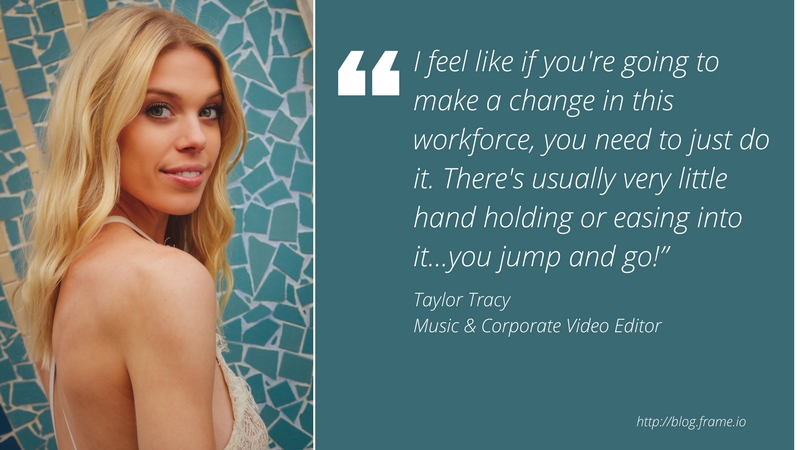
Moving Up The Ladder
Working at London Alley was a trial by fire at times, but Taylor knows she wouldn’t be where she is today if she didn’t take risks. “There were a few moments where I was set up to do a client edit, and I was terrified,” she says. “This is my first time working with a client face to face. I’ve just seen them through video on a screen until now. Again, it was all about taking that chance and that risk, and having the confidence that I know what I’m doing, and that I know what I’m talking about.”
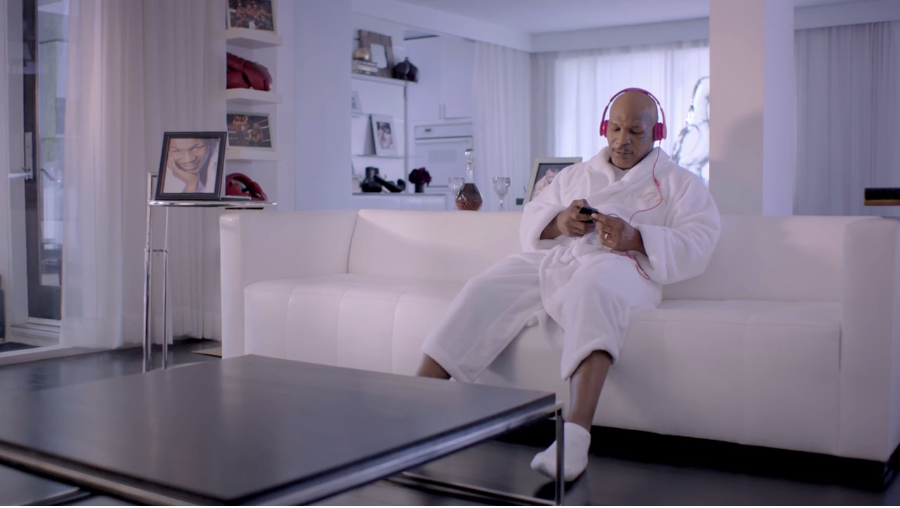
Taylor’s ability to work under pressure quickly sent her on an upward trajectory at London Alley. “I started editing within the first year I was there, and kind of became their in-house editor, as well as assistant editor,” Taylor says. “About two years into working with London Alley, I worked up to post supervisor. I was wearing a lot of hats. I was doing in-house editing, post supervising, booking color, and talking with clients.”
Taylor wouldn’t have been able to make that jump up to a more senior role if she hadn’t taken the initiative to learn how the rest of the company worked, in addition to the ins and outs of her own position. “I was paying attention to the relationships and to the responsibilities of the Post Sup because I knew that if I wanted to move up in the company, that’s the position I would have. I started getting cc’d on the emails to book color/vfx/sound design, so I was able to see how the initial conversations with the vendors were laid out.”
Of course, Taylor would never have been promoted if she hadn’t done her own job well, but her understanding of the priorities, relationships, and responsibilities of the rest of her team allowed her to step up when the need arose.
“Our Post Sup moved on to other work and the EP’s thought it would be best to fill the position with someone from the inside who knew how the company worked…me! At first I was terrified to book my first color session (this was over 2 years ago), but I soon realized that the vendors were there to help and wanting to collaborate with our directors. That’s what I love about this industry…everyone wants to work together & create awesome shit.”
She did not have all of the skills of the post supervisor at this point, but she at least knew what those skills were, and that was enough for her to dive in and survive. “I feel like if you’re going to make a change in this workforce, you need to just do it. There’s usually very little hand holding or easing into it…you jump and go! Thankfully I had friends and co-workers who were very helpful and understanding when I had questions or made mistakes (like sending the hard drive to the wrong color house, oops!).”
Even if your focus is narrower, Taylor advises making yourself familiar with the other phases of post-production that affect your job in one way or another. “I think you have to be well-rounded in a lot of the post aspects to really understand all of it.”
Being Your Own Boss: The Transition to Freelance
In spite of the various jobs she performed at London Alley, Taylor found it difficult to find time to do work in other genres of film. “Even when I was working full-time, I was getting offers to do other kinds of projects,” Taylor says. “I’d have to turn it down because it would put too much on my plate with full time work and additional edits. I was interested in growing my knowledge in post processes with other areas of the filmmaking industry.”
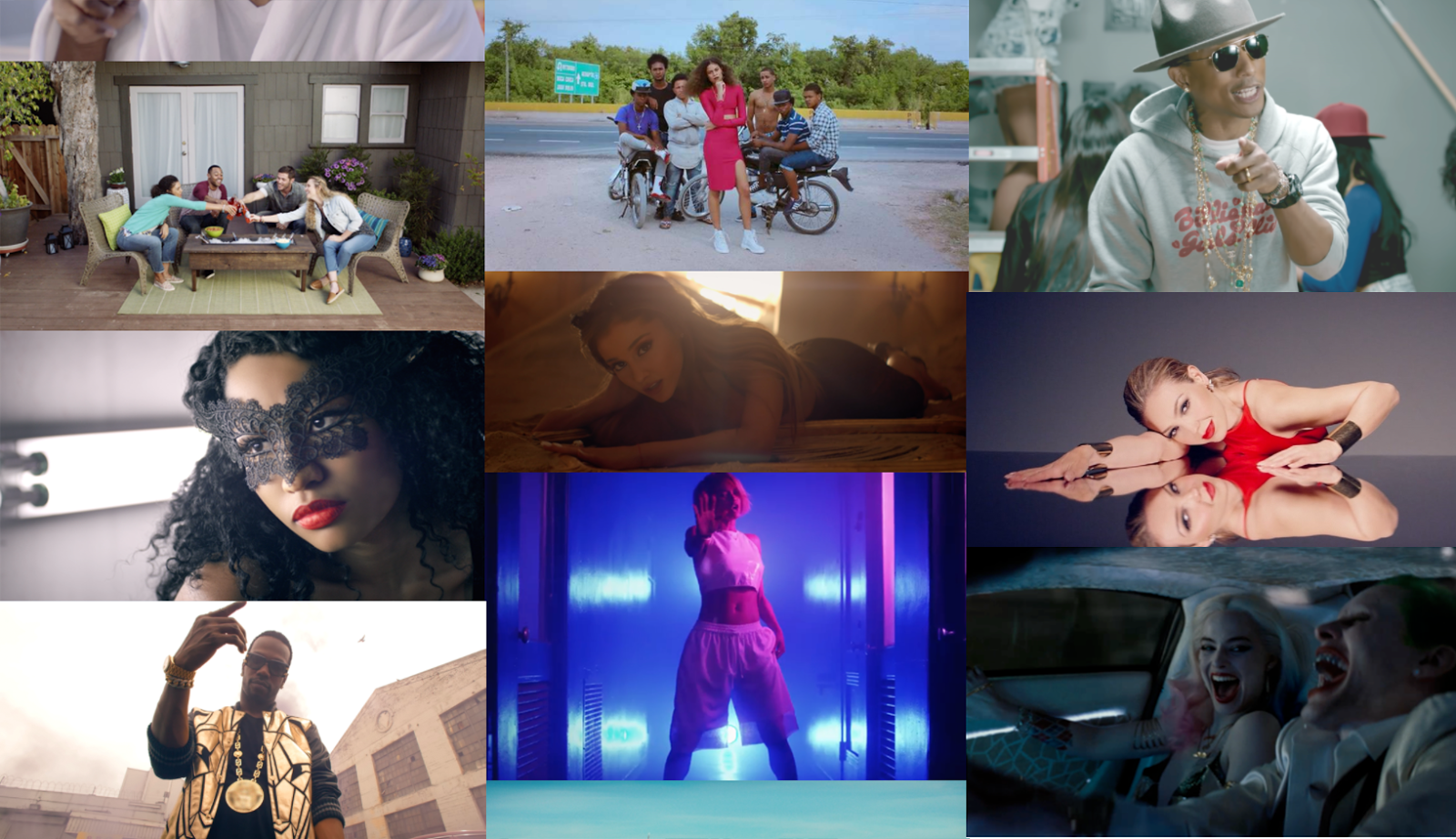
Now, Taylor is out on her own as a freelance editor. “What I really found appealing with freelance is that you do have the ability to manage your own schedule,” Taylor says. “You can take on jobs at times when you want to work, and you can step back in times that you just want to chill out. I’m excited to go out there and work with as many people as I can.”
On the creative side, there’s something liberating about only working on projects you specifically choose, instead of the ‘complete one project, move on to the next’ mentality of production company work. “I was working heavily with music videos, but I’m really curious about what the post norms are with commercials, or television, or film,” she says. “It gives me the time and the ability to explore those different areas; to grow as an editor, and as a person within post-production.”
How to Stand Out As a Freelancer
Even though Taylor is just starting her freelance career, she’s been hiring freelancers for years. And the key, if you want to get noticed, is to strike a balance between being accessible and adaptable.
“I’ve worked a lot with freelance editors, colorists and FX people,” she says. “The ones we tend to go back to are the ones who are always responsive, and who want to bring their own spin to the project. Make it a little fingerprint of their own style, but also be very conscious of what the director wants, and being adaptable to any notes that come in.”
If you don’t bring your own ideas to the table, you may not be viewed as an equal team member. On the other hand, you have to be careful never to cross that line between ‘helpful suggestion’ and ‘pushy assertion’ when presenting an opinion.
It can sound contradictory when Taylor tells you to bring your own ideas but also be adaptable. But it’s necessary to walk that line. It’s all about your attitude. You can voice your thoughts without being stubbornly attached to them. At the end of the day, the director makes the calls, but it’s your job as the editor to give them creative and unique options.
No matter the outcome, learn to focus on the positive and don’t let your attachment to a particular creative decision dwarf your enthusiasm for the project. “Be eager and excited, happy to be on the project,” Taylor says. “Your attitude is a big factor.”
At the end of the day, the client will hire the editor that he/she likes working with.
The Reel: Showcase Your Strengths Without Minimizing Your Adaptability
While it obviously isn’t the only factor, Taylor stresses the necessity of having a great reel. “The reel tells you what strengths that person has,” she says. “Have a good mix of everything.”
For Taylor, a good reel consists of a broad variety of settings and styles, “to show how adaptive they could be for each atmosphere, and each environment.”
“You do still want to show that you’re good at everything, but if you have a strength – and you know that’s your style – showcase that a little bit more than the rest,” Taylor says. “That can set you apart as something unique. That can be ‘your style’.” Something has to make you stand out. What is it?
The Freelancing Life
“As far as my personal decision, I’m trying to decide if I want to continue being a freelancer,” Taylor says, “or whether I want to join a post house eventually. As a freelancer, I’m relying on the relationships I’ve built through my previous work.”
Taylor doesn’t know if freelancing is the long-term answer for her – it’s definitely more scary than a steady job at reputable production house. But if she’d played it safe for the last five years, she would only be working with Ariana Grande in her daydreams.
